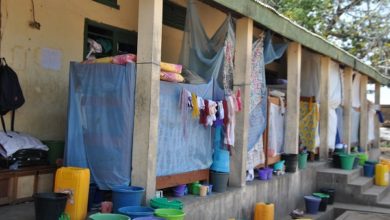Gold Fields Ghana clarifies decision to opt for contract mining at Tarkwa mine

Gold Fields Ghana Limited (GFGL) has clarified, the decision to opt for the model of contract mining is to meet the prevailing operating and economic conditions.
The operator of the Tarkwa gold mine maintains that contract mining is the option that will best ensure the longevity and sustainability of the Tarkwa mine.
Plans by mining giant to retrench more than 2,000 workers at its Tarkwa and Damang concessions have been described as “horrifying” by the Trades Union Congress (TUC) “Given the already precarious employment situation.”
The mining firm in a statement noted that its current operating model was unsustainable hence the decision to adopt contract mining at the operation.
Read the statement below:
Rising operational costs
As the Tarkwa mine matures, it has to contend with the following cost drivers:
- Deeper pits (meaning harder rocks, which translates into higher blasting costs)
- Longer hauling distances for its fleet (meaning more fuel burn)
- Increasing cost of reagents
- High cost of exploration
In addition to the above operational costs, there is also the year-on-year escalation of union-negotiated wage increases, the need to replace the mine’s aging fleet and the cost involved in extending the mine (mining) life. These factors make the current owner mining model unsustainable.
Under the contract mining model, a third-party mining contractor, with a partially or fully paid-off equipment fleet, assumes the operational and financial responsibility for the most critical mining activities (blasting, hauling, engineering, etc). This provides the mine with the needed flexibility to invest more in exploration and undertake the high cost of waste stripping to expose more ore for operational sustainability. Only then can the life-of-mine be extended.
A similar exercise (change to contract mining) at Gold Fields’ Damang mine in 2016 has since seen a significant turnaround in productivity and operational flexibility, with a potential upside in terms of the mine’s longevity.
Survival of Tarkwa
GFGL is taking this decision to sustain the Tarkwa operation. Several mines have been closed prematurely, partly because decisions needed to ensure a longer life-of-mine were not made. Management has the responsibility of balancing the needs and interests of all parties, including government, communities, employees and shareholders. We believe that the contract mining model is the option that ensures that the business operates for longer to deliver value for all stakeholders.
The Ghana Mine Workers Union has stated that Gold Fields Group’s Mineral Resource and Mineral Reserve declaration as at 31 December 2016 ascribes a life-of-mine of 15 year to Tarkwa. However, of these 15 years only nine involve mining, with the remaining six years used to process surface stockpile and heap leach material, which is significantly less labour intensive.
Transfer of employees to the contractor
The majority of Tarkwa employees (80 – 85%), who will be affected by the change in the business model (from owner mining to contract mining), will be absorbed by the mining contractor. This was agreed with the contractor and was a prerequisite of the transaction. During Damang’s transition to contract mining in 2016, about 80% of the affected employees were re-hired by the contractors.
All the affected workers, including those who will be re-engaged by the contractor, will be paid their full severance package, as agreed with the employees through the Collective Bargaining Agreement. The severance package is substantial and includes three months’ salary for each year of service. Therefore, the longer the years of service, the higher the severance package.Those who are not immediately engaged by the contractors will be the first point of contact for future job opportunities at the mine.
Community development
The Gold Fields Ghana Foundation (GFGF) funds community projects and programmes at the Damang and Tarkwa mines, from financing received by the mines based on the production and profitability of the operations. The contract mining model affords Tarkwa the opportunity to increase production, extend the life-of-mine through exploration, and remain viable to contribute to the Foundation and other community development programmes. To date, over GHS120-million has been spent by the Foundation on community development initiatives at both mines. This does not include the public road rehabilitation project that is currently ongoing between Tarkwa and Damang, estimated to cost over GHS100-million once completed.
Industry practice
The majority of the major mining companies in Ghana are using the contract mining model. These include Abosso Goldfields, Newmont Ghana (Ahafo Underground Project), AngloGold Ashanti (Iduapriem), Golden Star Resources’ Bogoso/Prestea, Asanko, Perseus, and Adamus (Endeavour) mines. GFGL’s decision to adopt contract mining is in line with industry practice and not an aberration. GFGL used the contract mining model at Tarkwa in the past (between 1996 and 2004), before switching to owner mining in 2004.
The need to adopt one model over the other is influenced by prevailing operating and economic conditions. Presently, contract mining is the option that will best ensure the longevity and sustainability of the Tarkwa mine.






casibom guncel giris adresi: casibom guncel giris – casibom giris adresi
casibom
farmacia barata: comprar cialis original – farmacia online madrid
farmacias online seguras en espaГ±a: tadalafilo – farmacias online baratas
pillole per erezione in farmacia senza ricetta: viagra – cerco viagra a buon prezzo
neurontin 200 mg capsules: gabapentin 300mg – neurontin 214
prednisone 30 mg daily: prednisone 10 mg tablet – how to purchase prednisone online